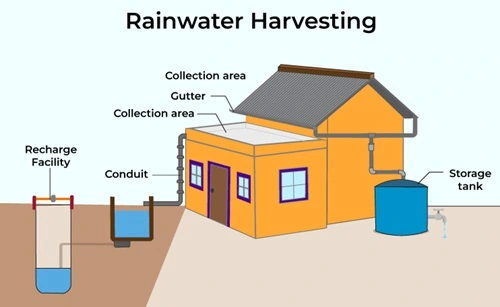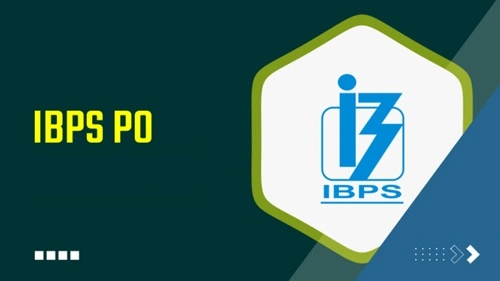Suppose you could collect rainwater from your roof and store it in barrels or tanks. Seems easy, doesn’t it? You can utilize the water you store for many purposes, including gardening, washing your car, flushing the bathroom, and, with the right treatment, even drinking! Well, that’s precisely what rainwater harvesting is all about.
Want to know how this actually works, well, the catchment area is your roof, basically. Then, rainwater flows through the gutters, gets collected, and then directed into a storage tank. Though, sometimes, a filtration system is added to make sure the water is clean and can be later used in various applications, and even for drinking.
And now you must be asking yourself why is collecting rainwater even necessary. Simply put, it is a fantastic method of putting to good use a renewable, natural resource that would have otherwise been wasted, and not just that, it’s kinda a great way to save water and cut back on using conventional water sources. Here are some pros and cons of rainwater harvesting:

Advantages of Rainwater Harvesting
1. Helping Out Mother Earth
See, if you catch rainwater, it doesn’t run off and drag soil along with it, which simply means that the dirt will stay put and plants will grow better. This is called less soil erosion. In addition, when rainwater runs off of streets and roofs, it typically picks up a lot of trash, including oils and chemicals, you know? By collecting this rainwater, we keep all of that filth out of our lakes and rivers, which makes them cleaner and healthier. And that is precisely how we are helping out Mother Nature by doing our part in rainwater harvesting.
2. Saving Some Serious Cash
Saving money is fun for everyone, right? And it is no hidden secret that water costs can be significantly reduced by harvesting rainwater. For example, you don’t have to use city water for everything. There are a bunch of things that can be done with rainwater, instead of using the city water supply, you know? And that’s how you save money on your water bills, sure, it is not much but, it helps in the long run.
3. Backup Water Supply During Droughts
What to do when there is a serious drought, and there isn’t much water in your area? Well, you can stash rainwater and set it aside for situations just like this! Having extra water on hand can save your life in places where it gets dry super often. All in all, in case there isn’t enough water, you have a backup plan to keep things running smoothly.
4. Super Easy to Set Up
It is very simple to set up a rainwater harvesting system. Simple methods, like a rain barrel, don’t need to be set up by a professional. There’s no better way to catch rainwater than to put a barrel under a downspout, right? This water is great for things other than drinking. It doesn’t have any poisons or chlorine in it, so your plants will love it and thrive. You can use it to wash your car or do any other cleaning you need to do.
5. Sustainable and Never-Ending Supply
The water from rain is a renewable resource, which means that it comes back every time it rains out there in your area. In some parts of the world, rain is pretty common, but all that water from rain is wasted most of the time. But now you know how to collect and use that water, which means, you’ll never have to worry about not having enough water, especially when it is dry season.
Disadvantages of Rainwater Harvesting
1. Big Bucks Upfront
A rainwater harvesting system might be somewhat expensive to set up, so let’s start with that. Imagine paying for all the plumbing, acquiring a good filtration system, and purchasing a large storage tank. The cost of these tanks by themselves can cause you second thoughts. Moreover, the expenses get crazy if you want the large tanks and a professional arrangement. Although you might save some money over time, the first hit can be difficult to manage.
2. Regular Upkeep
Once your rainwater system is in place, it’s not like you could merely lounge, sit back and relax, you know? To keep everything working as it should, these systems need frequent maintenance. Every now and then you have to empty the gutters and tanks to prevent leaves, dirt, and other trash from building up. If you slack off, your water could become a literal bacterial playground. Moreover, bird droppings and other muck on your roof might contaminate the water, hence routine cleaning and inspections are really necessary.
3. What About Mother Nature’s Mood Swings?
You guessed it, rain is a major factor in rainwater harvesting! If you live somewhere with erratic rainfall, your water source could vary greatly. You may have tons of water occasionally, then not so much. Your system may not provide enough water during dry spells, hence you will want a backup plan to keep everything running.
4. Space Hogging Tanks
Got space? You will want it for those large storage tanks. Finding a suitable place for these tanks might be a challenging thing, especially if you live in a proper urban or big city instead of a countryside village, you know? Indeed, those large tanks can occupy a lot of area, which would not be perfect if you already lack room.
5. Health and Safety Stuff
Rainwater harvesting carries various health dangers if not done carefully. What and how? Well, tanks of standing water can draw mosquitoes, and we are well aware that they can transmit malaria and dengue, right? That’s the very reason why keeping the tanks covered and often checking them is therefore super important. Additionally, the rainwater might pick up additional pollutants like the bird waste on your roof. If you are specifically thinking of using that collected water for drinking or cooking purposes, believe us, you must put in extra effort to make sure that water is not contaminated. All in all, keeping things safe mostly depends on regular filtration and water testing.
Compare Advantages and Disadvantages of Rainwater Harvesting
| Advantages | Disadvantages |
| Reduces soil erosion and water pollution | High initial setup cost |
| Lowers water bills | Requires regular maintenance |
| Provides backup during droughts | Dependence on rainfall variability |
| Easy to install simple systems | Large tanks take up space |
| Renewable water supply | Potential health risks if not maintained properly |



